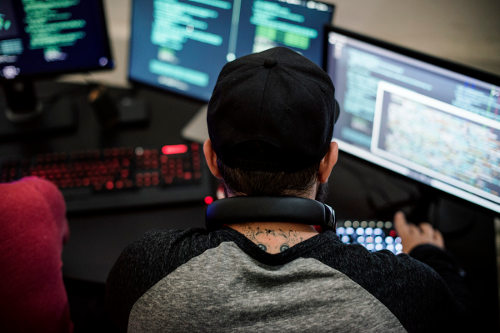Cryptojacking is a malware that mines virtual currencies such as Bitcoin mainly on websites and advertisements so that users who visit the site do not notice them.

To understand cryptojacking, I would like to talk a little about cryptocurrencies. As you may already know, virtual currencies are electronic currencies such as BitCoin, Ethereum, Monero and Ripple that do not belong to any country.
These virtual currencies use a mechanism called blockchain, and are not managed centrally by a specific nation or creator, but are shared and distributed among users and managed. Since it is not a centralized management, it is necessary to have a system to manage transaction records and prevent tampering. At that time, “mining” is an important keyword.
The Bitcoin system therefore seems to combine the advantages of electronic money and those of cash. Like a bank transfer, it allows remote payments, but like a cash payment, it is (almost) instantaneous and does not entail costs either for those who make it or for those who receive it.
For example, in the case of Bitcoin, it is necessary to confirm the transaction and perform the necessary calculation to connect the transaction record as a blockchain. Those who find the required value as a result of the calculation can get bit coins as a reward. Such an action is called mining, but it is said that it is usually difficult to make a profit when considering the electricity bill, etc., because this mining requires a huge amount of calculation. We call this “cryptojacking” the malware and the method that the malware creator receives only the reward after performing it on another person’s PC. Bitcoin Banker login is one of best source where you can get detail about bitcoin and cryptojacking.
Why is cryptojacking increasing?
It is reported that anonymity, easiness and profitability are one of the factors contributing to the increase.
In the case of normal malware, the malicious code or program is executed by inadvertently executing an attachment file or a method called drive-by-download, and after it has penetrated into the PC, it contains confidential information. Try to get the file. On the other hand, in the case of cryptojacking, it can be said that it is structurally simple because it uses only CPU resources.
Also, since many types of cryptojacking such as Coinhive are operated by JavaScript, they can be executed on most PCs and browsers, making it difficult to notice the infection or prevent the infection. It can be said that the increase is also a factor.

What happens if I get infected?
If you are infected with cryptojacking, the CPU usage will increase and the operation of the entire PC will feel heavy, and the battery will drain quickly.
You may notice something strange if the CPU usage increases or the fans start making noises only when you visit a particular site, but many PC users happen to have a heavy PC. I think it will be overlooked.
Depending on the case, processing may be delayed and work may be delayed, and there is a possibility that PCs and smart phones will malfunction due to thermal runaway, so a mechanism to prevent and detect infection by cryptojacking is necessary, I think it.
Measures to prevent infection
To prevent infection by cryptojacking, apply security patches for OS and applications as appropriate, block access to suspicious sites and unnecessary sites, and regularly update antimalware product definition files. I think that scanning is three effective measures.
Disabling JavaScript in the web browser is also one of the effective measures, but I think that it is quite difficult in reality because many recent websites assume that JavaScript works. ..
In this article, we have introduced an overview of cryptojacking and measures to prevent infection. What did you think? Cryptojacking will continue to be a vicious malware as cryptocurrencies increase in value.
In addition, there are many malware protection services that can detect and block illegal IP address, FQDN, and file in real time by using the threat database on the cloud called “PIT-Managed Endpoint Protection”. Using these services one can prevent infection and remain safe.


